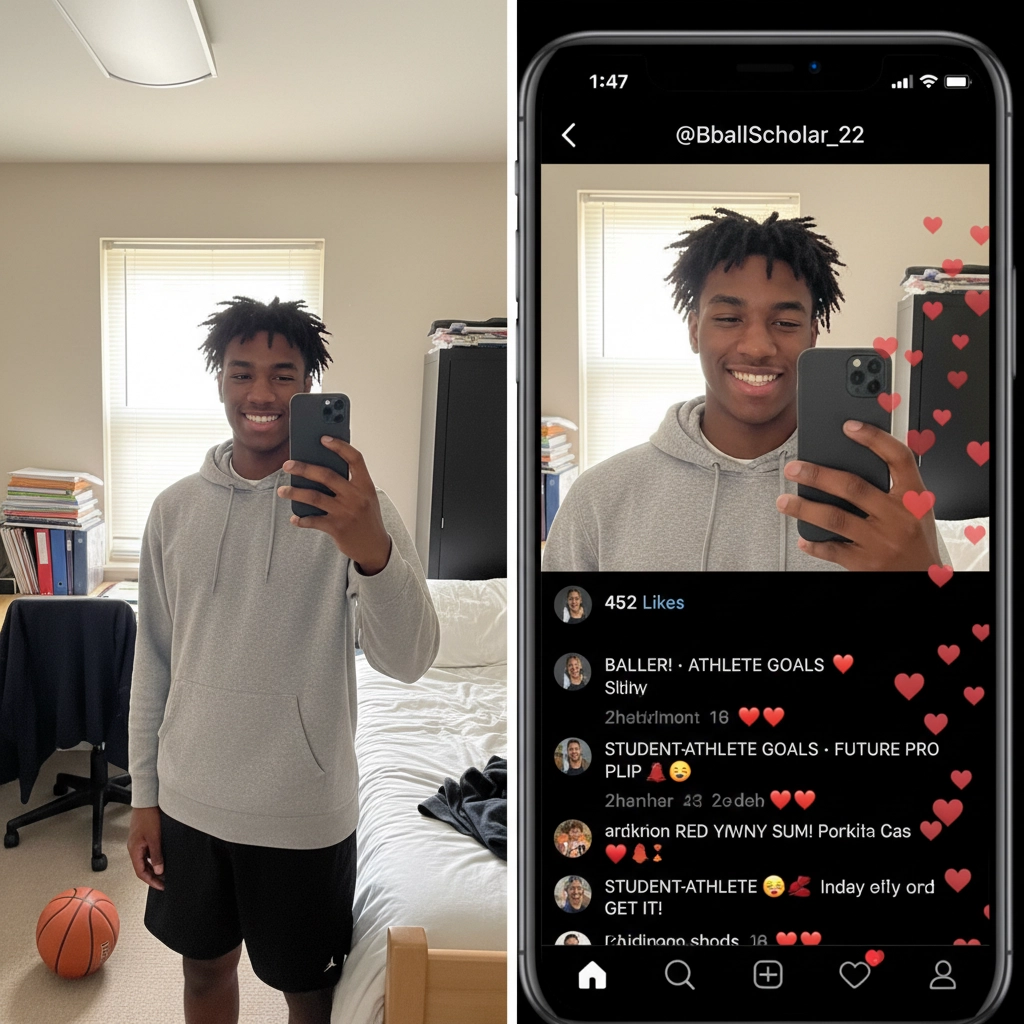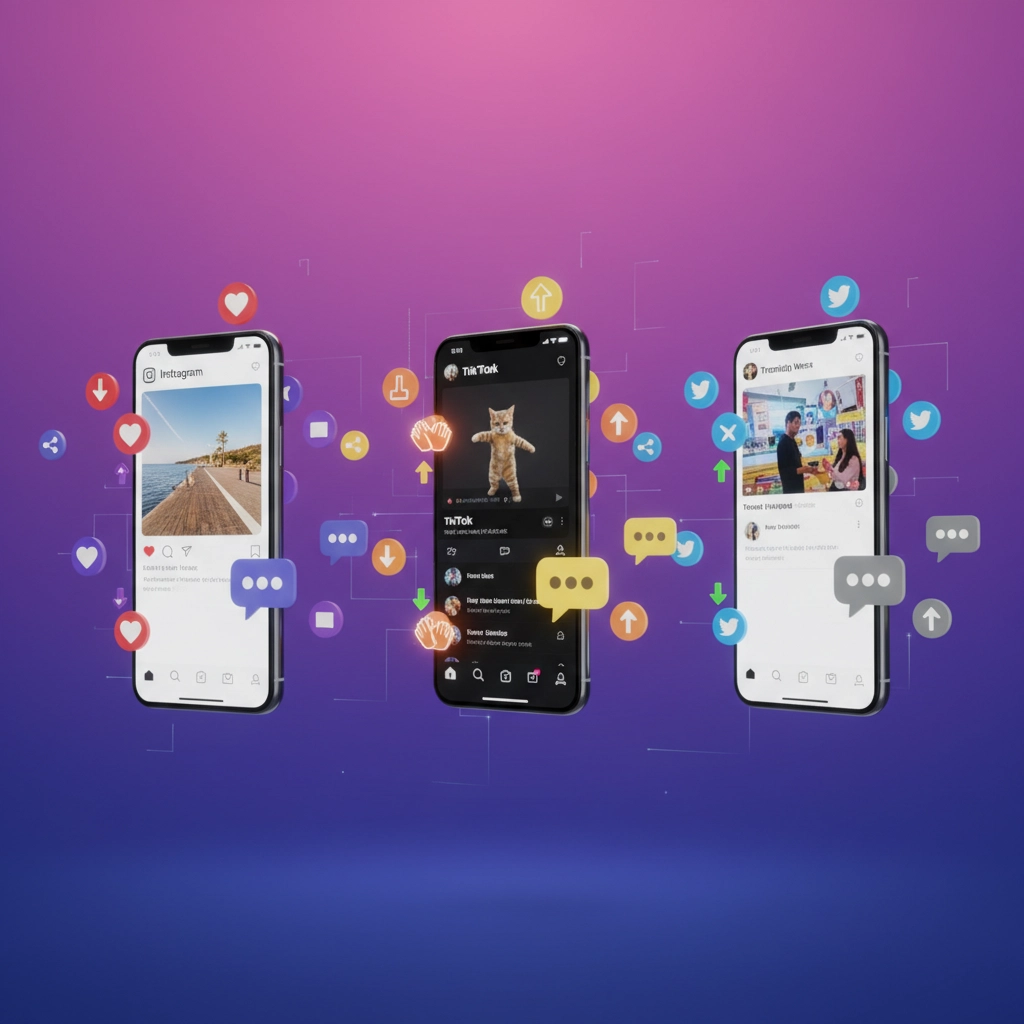The sports marketing landscape has undergone significant transformation with the introduction of Name, Image, and Likeness (NIL) regulations. Brands now face a strategic decision between partnering with traditional social media influencers or emerging NIL athletes. Each category presents distinct advantages and limitations that directly impact campaign effectiveness and return on investment.
Understanding NIL Athletes as Marketing Partners
NIL athletes represent college and amateur sports participants who can monetize their personal brand while maintaining eligibility. This demographic consists primarily of Generation Z individuals who maintain active social media presence across multiple platforms. The NIL athlete category encompasses participants from major sports programs as well as niche athletic disciplines.
These athletes maintain dual roles as students and competitive sports participants. Their content creation occurs within the constraints of academic schedules, training requirements, and competition calendars. The regulatory framework governing NIL partnerships requires compliance with institutional policies and state-specific legislation.

NIL athletes demonstrate measurably higher engagement rates compared to traditional influencers. Research indicates college athletes achieve engagement rates between 10-15% across their social media content, while standard influencers typically generate 1-3% engagement. This performance differential translates to increased visibility and interaction for brand partnerships.
Platform-specific performance data reveals significant variations in NIL athlete effectiveness. College athletes outperform traditional influencers by 120% on Instagram, 200% on TikTok, and 1000% on Twitter. These metrics reflect the authentic connection between NIL athletes and their follower base.
Traditional Influencer Marketing Characteristics
Traditional social media influencers operate as professional content creators with established audience bases and standardized partnership processes. This category includes lifestyle influencers, fitness personalities, and sports commentators who have developed followings through consistent content production.
Traditional influencers typically maintain larger follower counts and broader demographic reach compared to NIL athletes. Their content creation process involves professional equipment, editing software, and strategic posting schedules designed to maximize algorithmic visibility.
The traditional influencer model emphasizes polished content aesthetics and brand alignment. These partnerships often include detailed content guidelines, approval processes, and performance benchmarks established through formal contracts. Traditional influencers generally offer more predictable scheduling and content delivery compared to NIL athletes.
Audience Demographics and Engagement Patterns
NIL athletes connect primarily with Generation Z and Millennial audiences, with approximately 65-70% of their collective social media following consisting of Generation Z users. This demographic alignment creates opportunities for brands targeting younger consumer segments who prioritize authenticity and peer recommendations.
The audience composition for NIL athletes includes high concentrations of local and regional followers. College athletes maintain strong connections to their hometown communities and university locations, creating hyper-localized marketing opportunities for brands seeking regional market penetration.

Traditional influencers typically maintain more geographically dispersed audiences with varied age demographics. This broader reach enables brands to access multiple consumer segments simultaneously but may result in reduced engagement intensity compared to NIL partnerships.
Content Creation and Brand Integration
NIL athlete content emphasizes authentic documentation of training routines, academic responsibilities, and competitive experiences. This unfiltered approach resonates with audiences seeking genuine insight into athletic lifestyles. Brand integration occurs through natural product placement within existing content themes rather than dedicated promotional posts.
The content production timeline for NIL athletes operates within academic and athletic constraints. Training schedules, competition travel, and examination periods impact content availability and posting consistency. Brands must accommodate these variables when establishing partnership expectations.
Traditional influencer content follows more structured production schedules with professional-grade visuals and strategic messaging. Brand integration typically involves dedicated promotional posts, product reviews, and sponsored content that clearly identifies commercial relationships.
Platform Performance Analysis
Social media platform effectiveness varies significantly between NIL athletes and traditional influencers. Instagram performance demonstrates moderate advantages for NIL athletes, with their authentic content style generating higher engagement rates among younger demographics.
TikTok represents the strongest performance differential, with NIL athletes achieving double the engagement rates of traditional influencers. The platform's algorithm favors authentic, unpolished content that aligns with NIL athlete posting styles. Traditional influencers often struggle to maintain authenticity within TikTok's format preferences.
Twitter engagement heavily favors NIL athletes, with performance metrics indicating 10x higher interaction rates compared to traditional influencers. This platform advantage stems from real-time content sharing during competitions and training activities that generate immediate audience response.

Cost Considerations and Budget Allocation
NIL athlete partnerships typically require lower financial investment compared to established traditional influencers. Compensation structures often include product provisions, scholarship support, or modest monetary payments that align with NCAA compliance requirements.
Traditional influencer partnerships involve standardized rate structures based on follower count, engagement metrics, and content deliverables. These partnerships generally require higher upfront investment but offer more predictable cost management and performance expectations.
Budget allocation strategies must consider long-term relationship building versus immediate campaign impact. NIL partnerships often develop into extended relationships as athletes progress through their careers, while traditional influencer relationships may remain transactional.
Regulatory and Compliance Considerations
NIL partnerships operate within complex regulatory frameworks that vary by institution and state jurisdiction. Brands must navigate NCAA compliance requirements, state legislation, and institutional policies when establishing NIL athlete relationships.
Traditional influencer partnerships follow established Federal Trade Commission guidelines regarding sponsored content disclosure and commercial relationship transparency. These regulatory requirements remain consistent across partnerships and platforms.
Compliance management for NIL partnerships requires ongoing monitoring of eligibility requirements and regulatory changes. Traditional influencer compliance focuses primarily on content disclosure and advertising standards.
Integration with Emerging Social Platforms
The emergence of specialized sports social platforms creates new opportunities for both NIL athletes and traditional influencers. Platforms like Fanz.us specifically target sports fan communities and athlete-brand connections, potentially shifting engagement patterns and partnership effectiveness.

NIL athletes may find particular advantages on sports-focused platforms where their authentic athletic content aligns with platform user expectations. These environments eliminate competition from non-sports content and concentrate audience attention on athletic personalities and brands.
Traditional influencers must adapt their content strategies for sports-specific platforms while maintaining their broader social media presence. This adaptation may require content modification and audience development specific to sports fan communities.
Strategic Recommendations for Brand Partnerships
Brands targeting Generation Z demographics and seeking authentic audience connections should prioritize NIL athlete partnerships. The engagement advantages and demographic alignment create favorable conditions for building lasting brand relationships with younger consumer segments.
Organizations requiring broad market reach and consistent content production timelines may benefit from traditional influencer partnerships. The predictable scheduling and professional content creation processes align with structured marketing campaigns and established brand guidelines.
Hybrid approaches combining both NIL athletes and traditional influencers enable brands to maximize reach while maintaining authenticity. This strategy leverages the broad awareness capabilities of traditional influencers alongside the engagement advantages of NIL partnerships.
Performance Measurement and Success Metrics
Success measurement for NIL partnerships should emphasize engagement quality over follower quantity. Metrics including comment sentiment, share rates, and audience retention provide more accurate assessments of campaign effectiveness compared to basic impression counts.
Traditional influencer performance measurement typically focuses on reach metrics, impression data, and conversion tracking through established attribution methods. These standardized measurement approaches enable consistent campaign comparison and optimization.
Long-term brand awareness studies may reveal different effectiveness patterns between NIL athletes and traditional influencers. The authentic connections developed through NIL partnerships could generate sustained brand recognition that exceeds immediate campaign metrics.
The choice between NIL athletes and traditional influencers depends on specific brand objectives, target demographics, and campaign requirements. Data indicates significant advantages for NIL partnerships in engagement metrics and audience authenticity, while traditional influencers maintain advantages in reach and content consistency. Brands must evaluate these factors against their strategic priorities and resource constraints to determine optimal partnership approaches.
